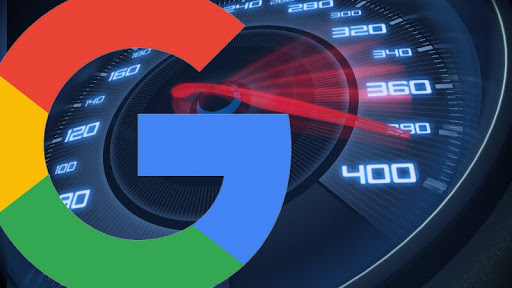I posed the question to SEO professionals what they thought was the most underutilized SEO strategy or tactic. I got over 100 responses which I broke up into 8 categories, and 44 sub categories.
This is part 5, which highlights the underutilized strategies related to technical SEO.
Technical SEO Sub Categories:
Audit and Improve UX

Jeff Meeks, VP of Sales and Marketing at EnergyFit tells us:
While most people are focused on name recognition for SEO, they neglect the person behind the computer, which is why concentrating on improving your user’s experience is one of the most effective strategies. Eliminate dead end pages and links, cluttered site structures and confusing content that deter people from engaging. Creating pages that are simple to navigate and have clear headlines, not only makes your website more user friendly, but makes scanning Google crawl faster, increasing the likelihood that they will click through to your website. By focusing on the user experience, you are essentially inviting people to go to your site, rather than just focusing on how high your name is listed in the search engine.
Oliver Sissons, who is the Head of SEO at Reboot Online Marketing states:
One of the most underutilized SEO strategies in my opinion is UX auditing. Most webmasters and SEOs get so caught up in looking at search volumes, backlinks and keyword optimisations that they neglect the most important thing – their users. A good UX audit will help highlight if your content lacks in depth or usability, or if your website’s design could be working against your ultimate aims. Better UX can also make it more likely that a website will pick up natural links from authoritative sources, as they become the go-to resource in their industry.
Improving your mobile UX is just as important, according to Joan Siopes, Digital Marketing Director at Herrman and Herrman PLLC.
Every day more and more users access the internet through smartphones. Still, Mobile User Experience (Mobile UX) is an overlooked SEO tactic. Websites prioritizing mobile UX means users can easily navigate their website and quickly find what they are seeking. An example of prioritizing UX is the space between page elements. Users should be able to scroll and click any content without accidentally clicking the wrong page elements. Anything less can cause the user to leave the page, negatively affecting the bounce rate, conversion rate, and the user’s feelings about the organization. The space and flow are critical to the user experience, especially on a smartphone since it is generally harder to navigate through web pages on a smartphone versus a desktop. While many other SEO tactics have a more scientific approach, like targeting keywords and internal linking, mobile UX is more about the “feel” of the website.
According to Sally Stevens, the co-founder and head of digital marketing at FastPeopleSearch.io using chatbots on your website is underutilized, but a great way to improve UX:

In my opinion, using website chatbots for marketing is absolutely underrated, even in today’s world where almost everything is going the AI way.
Apart from content and backlinks, today’s SEO rankings are also dependent on the user experience of your website. Chatbots literally turbocharge the user experience on any website. However, most chatbots have either been used in a limited manner or employed wrongly.
Prospects don’t want to read your content, they want to interact with it. Chatbot marketing is one way to make SEO interactive and effective. For instance, chatbots that provide product suggestions to your customers, even when placed ubiquitously on your product page, can really push conversions from organic traffic.
Improve Site Speed
Francis Angelo Reyes, Founder of Lupage Digital claims page speed is the unsung hero of SEO.
It’s tough to optimize for since it requires research, test, and technical capabilities. Page is the “technical” in Technical SEO. Due to this, you should collaborate with a web developer to make changes.
To put it in perspective, speed is not something that you see, but it’s something you experience. In fact, you need to rely on page speed tools to diagnose a website. Many tools can’t assess page speed issues properly apart from the staple ones like Google’s PageSpeed Insights. Any element rendered on the website adds to the speed. In addition, it’s something that most marketers tend to forget and put off.
Optimization includes trimming CSS and JavaScript files. Marketing pixels are added to the mix and should be monitored as well. Images are the worst offenders to page speed. And let’s not forget having a fast server that hosts the website is critical. All these require thorough implementation and care. You’d be lucky if there are plug-ins (like in WordPress) to do the job quicker.
Even though that page speed is a small factor in SEO, there’s a cumulative boost to all pages and content. The impact of optimizing page speed has great benefits. Once it’s optimized, the effect is sitewide. The implementation side is tough but it yields high returns.
Jonathan Zacharias, Founder of GR0 says:
One of the most underutilized SEO tactics is improving your site speed. As an increasing amount of customers expect immediacy above all else, Google is no different. Specifically, Google ranks speed via their Algorithm Speed Updates.
Not only that, but site speed also indirectly affects your SEO performance by affecting conversion rate. Indeed, studies have shown that when a page’s load time is slowed down from 1 to 3 seconds, bounce rate increases by an estimated 32%.
Whether it be explicit or implicit, site speed has a direct correlation with one’s SEO performance.”
Design with Multiple Platforms in Mind

Alex Alexakis, Founder of PixelChefs shares:
One of the most, if not the most underutilized SEO strategy is not only accommodating for multiple platforms but design with multiple platforms in mind. Developing and setting up our landing page on a desktop computer often gives us tunnel vision so we only really consider what looks best there, but most of our computers use mobile platforms. Making sure that every facet is optimised, from user experience to image scaling is very important. Many people forget about tablets too which can be a person’s preferred platform. It could also be worthwhile to use different image resolutions depending on platform so that performance isn’t an issue, meaning they will stay on your page for longer than if there was a lot of slowdown.
In conclusion
Improving your UX and site speed, along with designing for multiple platforms may be some underutilized SEO strategies that you can want to focus on to improve your ranking.
Other Categories in this Series:
#1- Underutilized Keyword Research Strategies
#2- Underutilized Onsite Optimization Strategies
#3- Underutilized Content Strategies
#4- Underutilized Link Building Strategies
#6- Underutilized Local SEO strategies

